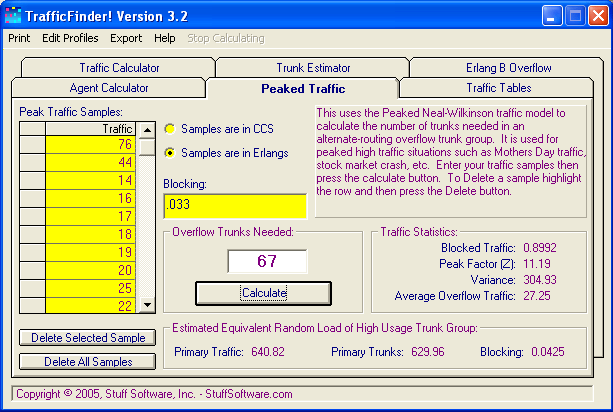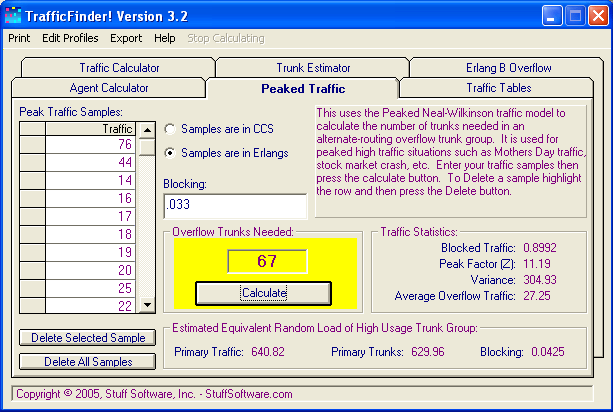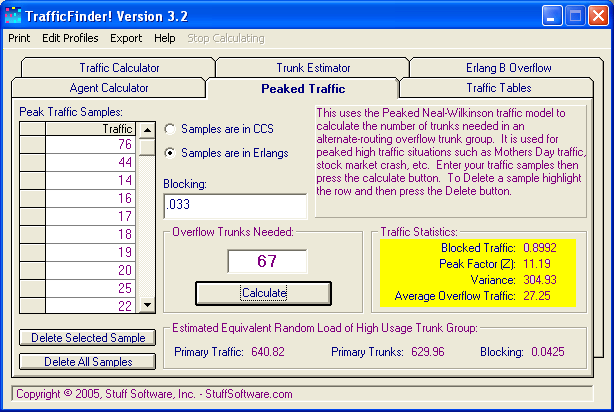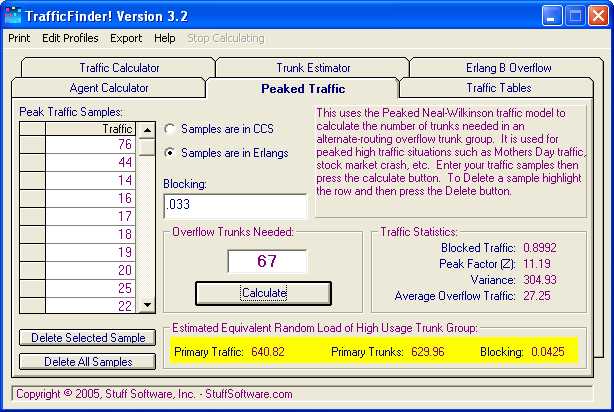
Download Center | Free Trial | C.O. Finder! | Traffic Finder! | Number Portability! | Local Loop Finder! | Pricing and Ordering | Help/Support | Contact Us

|
|
Download Center | Free Trial | C.O. Finder! | Traffic Finder! | Number Portability! | Local Loop Finder! | Pricing and Ordering | Help/Support | Contact Us |
TrafficFinder! TM - Erlang B Peakedness ( Neal Wilkinson, Neal-Wilkinson, Equivalent Random Load)
| Help Topics: | Step 1: Enter all of your traffic samples in either CCS or Erlangs. This is the traffic that is being sent to the overflow group from the high usage trunk group. |
|
Peaked Traffic (Neal-Wilkinson)
Traffic Models: Erlang B Peaked(Neal-Wilkinson)
Traffic Tables: |
 |
| Step 2: Press the calculate button and read the number of trunks you need in the overflow group based upon the Neal-Wilkinson Model. | |
 |
|
|
Read statistics for the Overflow Group (Alternate Route) : TrafficFinder! calculates the Peakedness Factor Variance and Average Overflow Traffic from your samples. |
|
 |
|
|
Read statistics for the high usage trunk group: TrafficFinder! estimates the Equivalent Random Load of the Primary (high use) trunk group. In the scenario below 640.82 Erlangs are presented to a fictitious Primary trunk group of 629.96 trunks. This Primary trunk group overflows 27.25 Erlangs to 67 Overflow trunks. The 67 Overflow Trunks handle all but .8992 Erlangs (.033 blocking). Calculations are based upon the Neal-Wilkinson Equivalent Random Load theory. The Peaked Neal-Wilkinson traffic model is used to calculate the number of trunks needed in an alternate-routing overflow trunk group. It is used for peaked high traffic situations such as Mothers Day traffic, stock market crash, etc. |
|
 |